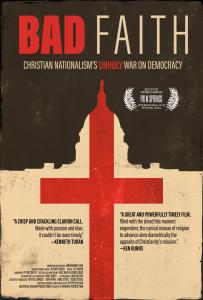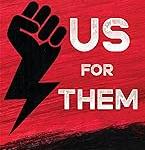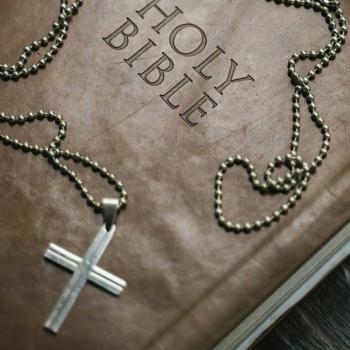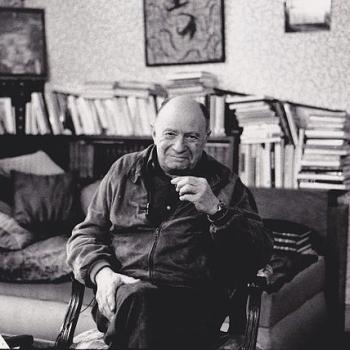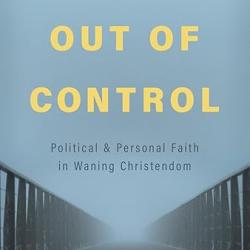Bad Faith?
I recently watched a documentary entitled Bad Faith (2024, Prime Video streaming service, $1.99 rent). It is about Christian Nationalism in America. I didn’t learn anything new. I’ve tracked the movement back to its roots in the so-called Religious Right/Moral Majority movements in the late 1970s through the 1980s and up to now.
I know one of the commentators in the documentary, Randall Balmer. He has written some excellent books about American religion and politics.
The gist of the documentary seems to be Randall’s narrative about the rise of the Religious Right and Moral Majority. And the true roots of American Christian Nationalism as it is expressed in the current rise of “Trumpism.”
Before I get into that narrative, and why I disagree with it, I will say that I enjoyed the documentary even though it was, to say the least, “choppy”—very quickly switching between scenes and commentators. It was enough to give a viewer whiplash. Before one commentator such as Jonathan Wilson-Hartgrove got his words out of his mouth the camera was off to something or someone else.
The documentary was clearly made to alarm viewers as to the pernicious motives and influences of white American Christian Nationalism. I do think it would have improved the documentary had it included at least one sane advocate of Christian Nationalism. IMHO it didn’t do that. You might ask who I mean. Well, perhaps Doug Wilson?
The underlying narrative of the video documentary is that offered by Randall Balmer in his book Bad Faith: Race and the Rise of the Religious Right. Randall’s narrative is that the Religious Right began as a cynical and even racist reaction to a Supreme Court ruling against Bob Jones University. But, according to that narrative, the promoters of the Religious Right failed to gain traction until after Roe v. Wade when they latched onto the abortion issue which caught fire among conservative religious people, especially evangelicals.
I think the rise of the Religious Right was a reaction to the cultural revolutions of the 1960s. It was not primarily about race, even among its leaders; it was about returning America to the American culture of the 1950s. Yes, of course, many people who joined the Religious Right, like some of my own relatives who campaigned for Pat Robertson to be president, forgot that the 1950s was an era where racism was still rampant and systemic in America. But what caused them to think the 1950s was a “golden era” in America was the extreme changes that came in with the 1960s.
I recently watched a documentary about my home city in the 1950s. My home city was and is in the Upper Midwest. The documentary emphasize how safe and neighborly and optimistic the city was in the 1950s. The clear message was that it is not so now, having become much more cosmopolitan and urban. It has more than doubled in size since the 1950s.
I believe the promoters of the Religious Right were primarily motivated by the contrast between the way most of America was in the 1950s (and before) with the way it became, their eyes, during and after the 1960s.
I believe this because I lived through the 1960s and grew up in a conservative Christian home, church, and college and heard the chatter about the immorality of the 1960s and the increase in crime and the loss of the “American dream,” etc.
Yes, to be sure, many conservative American religious people, especially in the South, were dismayed by the Supreme Court ruling stripping Bob Jones University of its tax-exempt status due to segregation of races on its campus (manifested in the rules against inter-racial dating, etc.).
THE question is whether the founders of the Religious Right/Moral Majority were cynical racists or not, whether they cared little about abortion or not. The narrative is that they didn’t but latched onto the abortion issue after Roe v. Wade solely in order to promote their hidden racist agenda.
The documentary attempts to trace the rise of current American white Christian Nationalism back to very strongly lingering racism among the founders and leaders of the Religious Right/Moral Majority—linking them with people like Jesse Helms, George Wallace, and Storm Thurmond.
Am I denying that white American Nationalism is divorced from race and racism? Not at all. But I don’t think racism is its main driving motive. Nor was it ever in “modern times.” Because I know very many people who are sympathetic with American Nationalism in its current form and who were very sympathetic with the Religious Right/Moral Majority in the late 1970s and afterwards, I am convinced the driving force within it is complex but has to do with a perceived drift or shift of American culture away from its 1950s shape into its post-1960s shape.
*If you decide to comment, make sure your comment is relatively brief (no more than 100 words), on topic, addressed to me, civil and respectful (not hostile or argumentative), and devoid of pictures or links.*


